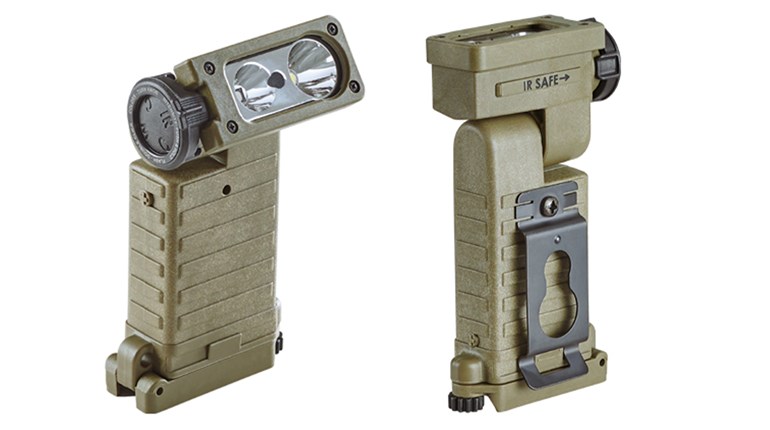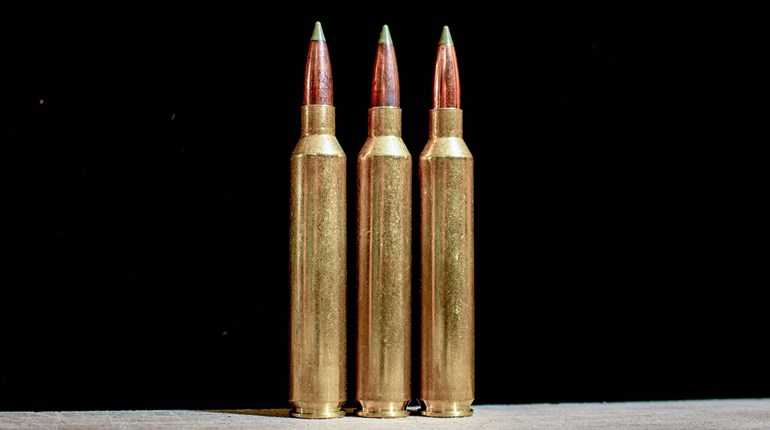
Tritium self-luminous night sights (like the Trijicon HD XR shown), a grip-activated laser (Crimson Trace LG-660) and a handheld light (SureFire E2D Defender Ultra) are prudent accessories for a concealed-carry gun.
When it comes to handguns and their employment, there’s a certain amount of overlap between law enforcement, military and private-citizen usage. After all, putting the front sight on the target and controlling the trigger straight to the rear without disturbing it works pretty much the same whether you’re wearing MultiCam, blue polyester or jeans. The problem is, because of this basic commonality, the very real gap between the needs of the military, law enforcement and the private citizen is sometimes not recognized. This lack of recognition can manifest itself in a few different ways.
For instance, if you’re in a class with your wife or husband or business partner and the two of you are being taught how to move through a structure together while armed, that makes a lot of sense. On the other hand, if you, as a private citizen, are in a class where you’re stacked outside a doorway with a bunch of strangers preparing to practice clearing a room, you are auditing a class for a test you will probably never ever take and are there for the “entertrainment.”
Objectives differ: Soldiers close with and destroy the enemy, police track down and apprehend criminals to face justice, and the private citizen has the duty to prevent the bad guy from successfully victimizing them. These different motives manifest themselves in different gear needs.
Night is a commonplace setting for needing a concealed-carry gun, but true-dark darkness really isn’t. In this modern world, the places where crime occurs can be dim, sure, but rarely is it truly dark. (Note that I’m distinguishing concealed carry from home defense, here.) Basically, the bad guy needs to see you in order to know you’re there to target you in the first place. As trainer Chuck Haggard has phrased it, “It’s really tough for bad guys to rob you, or even find you, when everyone is in the pitch-black ninja closet.”
Tom Givens, head honcho at Rangemaster, taught out of his facility in Memphis for years and, as a result, has a large database of students who were involved in armed self-defense situations. At the time of this writing, his students were involved in more than 60 shootings. Not one of them required a light to see or hit the bad guy.
Now, I’m not saying don’t carry a flashlight. Heck, carry a flashlight even if you’re someplace you can’t use a concealed-carry gun. A compact, bright, pocket flashlight is going to get used a lot more than a pistol, anyway. But, unlike in home defense (or in law-enforcement use), a pocket flashlight for the private citizen is usually not necessary for threat identification; threats usually identify themselves in public places. A bright pocket flashlight can avert incident before the threat becomes a threat. Using it to light alley mouths or the shadows by the dumpster as you’re walking to your car can prevent a situation from turning into an attack in the first place.
This is all completely separate from weapon-mounted lights, which I personally think are something short of necessary on a concealed-carry gun. Concealed-carry guns tend to be used reactively rather than proactively, so anything that doesn’t turn on when you grab the gun in your master grip probably isn’t going to get turned on until the loud noises have stopped. When I had a light on my concealed-carry pistol, it was a Crimson Trace Lightguard. It added minimal bulk, had a grip-activated switch and generated just enough lumens to better illuminate something I’d already decided was OK to point my gun at anyway. It was not made for searching buildings—and that’s fine, because searching buildings ain’t my job.
Then we have night sights. The first thing everybody does to check out night sights is run into the most light-tight room in the house and turn the lights out. While this is a great simulator of the aforementioned “ninja closet,” remember that nobody gets attacked in there. Where night sights come in handy is a location too dim to see your sights easily—as well as your target—but there is a brightly lit area between you. If you look across any large night-time parking lot, you will see a dozen places that fit this description.
Tritium sights are rarely necessary, but invaluable in the circumstances where they are. Instructor Todd Louis Green had a little demonstration you can do at home to see this for yourself. Some night, without changing any of the normal lighting in any of the rooms in your house, safely fieldstrip a pistol and move around the house with the dismounted pistol slide. You will discover plenty of areas where you’re standing in, for example, a hallway that’s too dim to see the sights well and are looking across the well-lit dining room into a living room that’s too dim to allow you to silhouette the sights against anything in it.
Lastly, I’d like to touch on lasers, if only because I hear so much “give away my position” silliness. Lasers do not work like the movies. There aren’t red beams hanging in the air unless you’re in the ninja closet and it’s full of smoke. Lasers make super-handy aiming references for smaller concealed-carry guns, like Smith & Wesson J-frames, drawn reactively from an awkward position. They do, however, need to be grip-activated to be useful. A button or switch elsewhere on a concealed-carry gun might as well be in Albania for all the good it’ll do you should you try and pull the gun out in a hurry in response to an attack.
Basically, any time someone’s biggest objection to something, be it a flashlight, glowing tritium lamp or laser is “It’ll give away my position!” I have to wonder what sort of attacker they’re preparing for. If he doesn’t know your position, how is he attacking you in the first place?






































